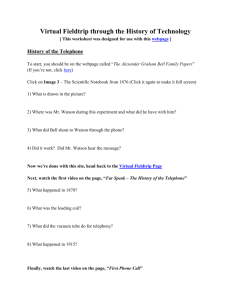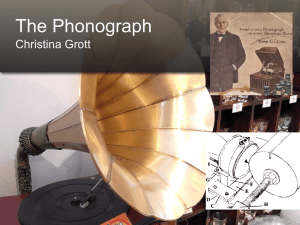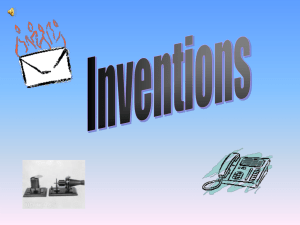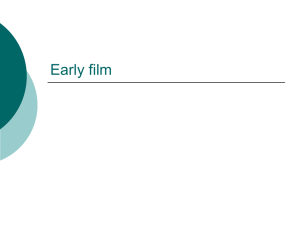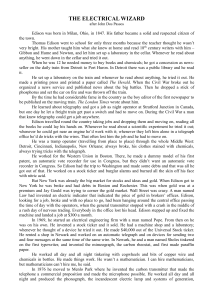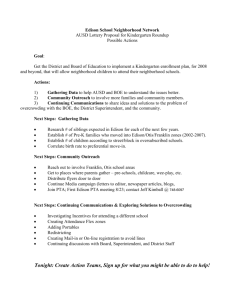answer key here - Boise State University
advertisement
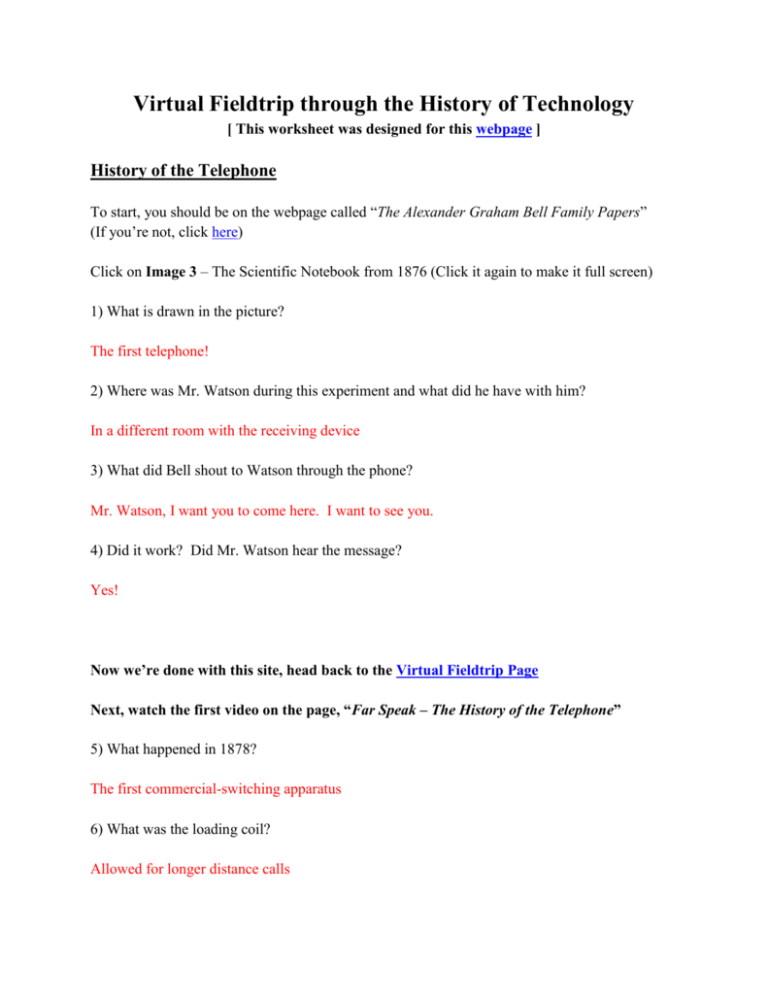
Virtual Fieldtrip through the History of Technology [ This worksheet was designed for this webpage ] History of the Telephone To start, you should be on the webpage called “The Alexander Graham Bell Family Papers” (If you’re not, click here) Click on Image 3 – The Scientific Notebook from 1876 (Click it again to make it full screen) 1) What is drawn in the picture? The first telephone! 2) Where was Mr. Watson during this experiment and what did he have with him? In a different room with the receiving device 3) What did Bell shout to Watson through the phone? Mr. Watson, I want you to come here. I want to see you. 4) Did it work? Did Mr. Watson hear the message? Yes! Now we’re done with this site, head back to the Virtual Fieldtrip Page Next, watch the first video on the page, “Far Speak – The History of the Telephone” 5) What happened in 1878? The first commercial-switching apparatus 6) What was the loading coil? Allowed for longer distance calls 7) What did the vacuum tube do for telephony? Allowed for even longer distance calls (cross-country) 8) What happened in 1915? Telephone lines spanned the continent Finally, watch the last video on the page, “First Phone Call” 9) What did Bell spill on himself during the experiment? Acid 10) Was Bell happy with his invention at the beginning? No, he thought it was impractical All right, we’re done with this section, head over to the Audio Recording section! History of the Audio Recording Industry You should be at the page, “The History of the Edison Cylinder Phonograph” (If you’re not, click here – All the answers are in the first paragraph) 11) What two machines was Edison working on which helped him create the phonograph? The telegraph and the telephone 12) What happened when you would speak into the mouthpiece of his original machine? Sound vibrations would be indented onto the cylinder by the recording needle 13) What was the first thing Edison recorded? Mary had a little lamb Now we’re done with this site, head back to the Virtual Fieldtrip Page Check out the next paragraph on the page and then you’ll have some videos to watch. 14) What was the name of the first recording device? Phonoautograph 15) What happened in 1877? Edison invented the phonograph 16) What happened in 1888? The Gramaphone was invented 17) What happened in 1948? Long-playing discs were invented 18) Where did tape recording come from? The Germans 19) What was the first step towards portable music? Tape players in cars. 20) When was the CD invented? 1983 21) When was the MP3 invented? 1994 Great work, now watch the second video! As was briefly mentioned in the last video, Edison wasn’t the first to record sound. A Frenchman by the name of Edouard-Leon Scott de Martinville actually beat him by about 17 years. However, he had no way to listen to the recordings he made. Watch the second video and when you’re done, head on to the Film section of our trip! History of Film You should be on the site “History of Edison Motion Pictures” (If you’re not, click here) 22) What was a magic lantern? A device that used glass slides to and a lamp to project images 23) What was the Zoopraxiscope? Projected a series of images in successive phases of movement 24) What did Edison think of the Zoopraxiscope? He thought it wasn’t very practical or efficient 25) Who did most of the work inventing the Kinetoscope? Dickson, Edison’s assistant. The next paragraph on our virtual fieldtrip page has a link to visit and you’ve got one question about that page: 26) In your own words, describe how the Kinetescope worked (4 sentences). Next on the page, you’ll find a video, “A Brief History of Film.” Please watch it while answering these questions: 27) What was a Zoetrope? A rotating drum with pictures that you watched through slits. 28) Who invented the flexible film that Edison could use? George Eastman 29) Who invented the projector that finally worked? Arman 30) What was the first “movie?” Arrival of a train at a station Watch the second video and when you’re done, head on to the Computer section! History of Computers You should be on the site “A History of the Computer” (If you’re not, click here) 31) What was the Abacus? (Click on the link below the picture) A simple counting aid invented in the fourth century B.C. 32) What was the Difference Engine? (Same page as the Abacus) A massive steam-powered mechanical calculator 33) What was ENIAC built for? (Under the Transistor page) To assist in the preparation of firing tables for artillery weapons 34) Who was Doug Engelbart and what did he do? Created the first word processor. 35) How much did a minicomputer cost in the 1960s? (Same page as Engelbart) $20,000 36) What company invented the first 8-bit microprocessor? (Under the Apple II Page) Intel 37) By 1980, which company had 50% of the personal computer market? (Under the Apple II Page) Apple Now we’re done with this page, head back to the Virtual Fieldtrip Page While you’re watching the first video, answer the following question: 38) In your own words, how does a computer work? (5 sentences) Next, watch the second video on the page and answer this question: 39) List 5 events (The date, the name of the event, and its importance) that are described in the video (2 sentences each). Finally, watch the last video on the page (you’ll need the information in them for your final reflection) then head to our last page – The History of the Internet The History of the Internet For this section you should be on the page, “Internet History” (If you’re not, click here) 40) For this section, please write a 5 sentence summary of each decade. Include dates and the 5 most important events on each page. The 1960s: The 1970s: The 1980s: The 1990s: Now we’re done with this page, head back to the Virtual Fieldtrip Page 41) While you’re watching the last video, “The History of the Internet,” write a 12-sentence summary about what you learned. And you’re done! Nice work! Email me this worksheet and you’re all finished.
